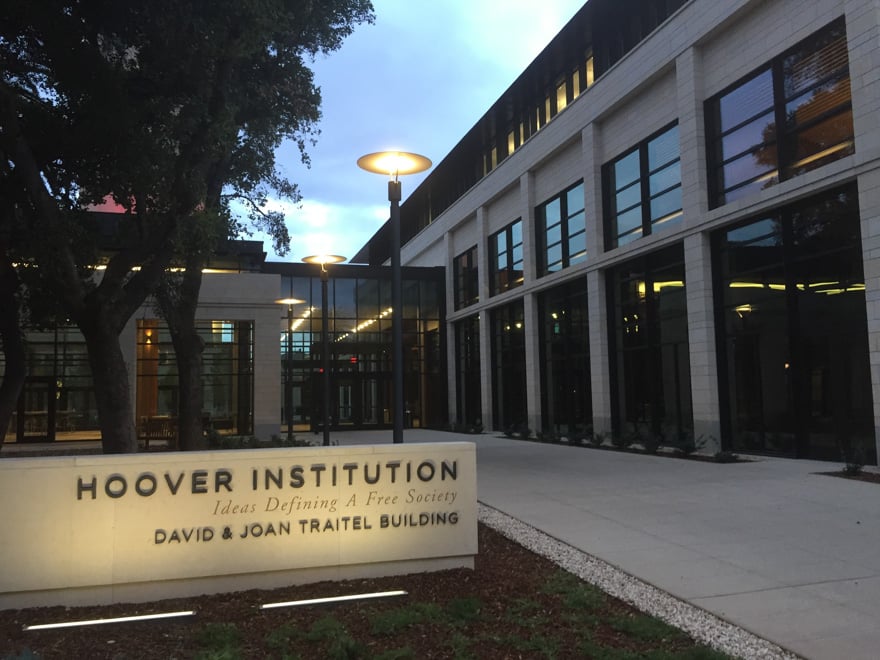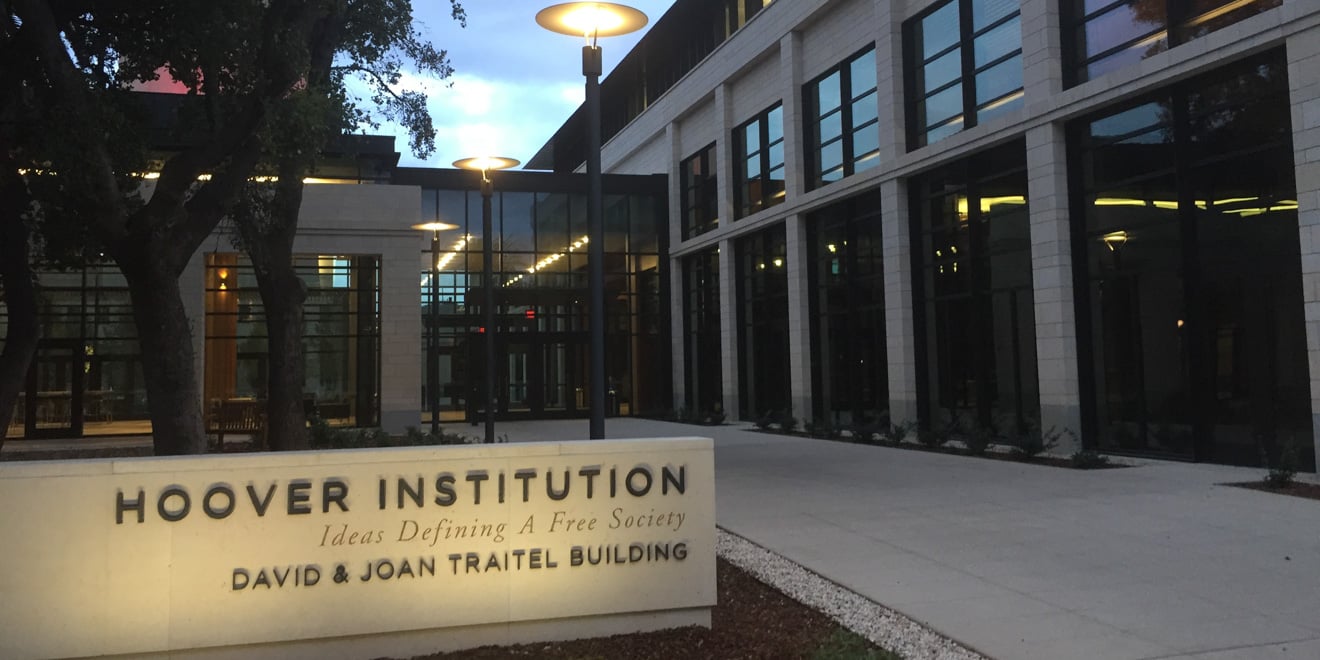
With the opening earlier this fall of the David and Joan Traitel Building, the Hoover Institution has a new space to host its scholars, conferences and workshops.
Construction for the 55,300-square-foot building began in September 2015, spurred by the growing size and influence of the public policy think-tank, which now houses 175 fellows.
“I think one of the best things that might happen with the Traitel building is that there are lots of Hoover scholars who are really eager to engage with students, describe their research and even get students involved in their research,” said Caroline Hoxby, a senior fellow at Hoover. “The older Hoover buildings are really not made for that — they are really just office areas that have very few spaces where students would naturally want to go to a big lecture or engage with senior fellows. [It] is going to be very popular with its constituencies.”
According to its website, the Hoover Institution aims to “to improve the human condition by advancing ideas that promote economic opportunity and prosperity, while securing and safeguarding peace for America and all mankind.”
The institution served primarily as a library and archives up until 1959, before shifting its focus toward contributing to public policy. Scholars and fellows now engage in a wide array of research at the institution, tackling issues ranging from economic policy to foreign affairs to national security.
Often described as a conservative policy hub, Hoover’s presence on a largely liberal campus has stirred controversy over the years. A Daily article from 2008 recounts repeated efforts by some students and faculty to sever Hoover’s formal ties to the University.
But Lisa Lapin, vice president for University communications, wrote in an email to the Daily in February that Hoover’s affiliates span the political spectrum.
“Many Stanford faculty members hold appointments as Hoover Fellows, including faculty in FSI and political science, economics and business,” Lapin wrote. “It is important to note that Hoover has Fellows that have worked for both Democrat- and Republican-led White Houses/Administrations.”
The Institution’s new building was officially unveiled on Oct. 22 in the presence of University President Marc Tessier-Lavigne and Jeff Raikes, the chair of the Board of Trustees, alongside Hoover fellows.
The new building features an auditorium, a multipurpose dining room and several conference rooms. The auditorium can hold up to 400 people, providing a sizable space for seminars and discussions. The second floor of the Traitel building is reserved largely for Hoover fellows and staff and consists of private offices, workspaces and conference rooms.
Hoover hosts multiple large conferences throughout the year, gathering scholars and thought leaders from around the world to address pressing global issues. The old building made hosting such large conferences difficult, Hoover affiliates said.
According to Hoxby, many of these conferences were previously facilitated by setting up huge tents out on the lawn.
“I often gave talks in these tents, and it was clear to see [that] the tents often had really bad acoustics, where it was hard for people to see and hard for people to hear,” Hoxby said.
Jeffrey Jones, Director of Operations at Hoover and Internal Project Manager for the building, agreed that Hoover needed to increase its space.
“The last building that Hoover built was around 40 years ago, and the institution has grown significantly since then,” Jones said. “The new building allows us to have room to grow for the next 20 [to] 30 years.”
Another purpose of the building is to increase Hoover’s Hoover’s engagement with students, providing scholars with a new setting where they can present their research to the wider community.
“The goal was to structurally design a building that’s more open to the campus and more connected to the students,” Jones said.
As more students come into the building and learn about the library and archives, Jones hopes that students will take advantage of Hoover’s resources.
The building has already been used for a Summer Policy Boot Camp, which gathered 81 students for a one-week immersion program in national and international policy.
“The building worked very well for [the boot camp],” Hoxby said. “Students could really see what was being presented and hear one another. It was much better.”
Contact Amay Aggarwal at amayagg ‘at’ stanford.edu
